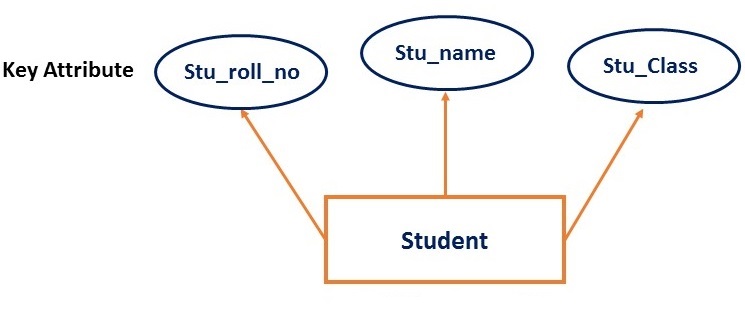In this tutorial, we will discuss what is ER Model and also the components of ER Model, which includes- Entity, Attributes in DBMS.
ER Model
The ER model is the algorithm or the graphical representation of entities, which displays the data graphically. The ER Model shows the connection between two data, that how the structure of the database is described. The ER Model helps to easily identify the relation of entities to entities(Object). ER Diagram is made of several components
Entity
Entity means real-world things that can be either living or non-living, which is easily identified.
The entity is an object which can be a person, place, vehicle, school, college, company, animal, insects anything in this world living or non-living objects.
The entity is a single object and if several entities are there then it is an entity set. The information about an entity is known as attributes.
For example, if you have an entity student then the names, class, roll no, dob are the attributes of the entity.
The Set of Entities is the collection of similar types of entities that share the same attributes. For example, the following diagram shows the entity set.

The entity is represented by a rectangle symbol and the Set of Entity is also defined by a rectangle symbol

Types of Entity
- Strong Entity
Strong Entities are entities that have attributes, so they can be used as Candidate Key, Primary Key, and Super Key to be identified in a large database.
For example, Employee is an Entity, and Emp_name, Emp_Id, Emp_Salary, Emp_Dob, and Emp_Address are the attributes of Entity Employee.

- Weak Entity
Weak Entity is just opposite to Strong Entity as it doesn’t have enough attributes to form a primary key.
A weak entity depends on another entity.

Attributes
The entity has some information about it and this information is called Attributes. Therefore, Attributes are the properties of an Entity.
For Example:
Student entities with some information like Stu_name, Stu_class, Stu_age, Stu_addr, Stu_phone_no, etc. are the attributes.
Types of Attributes.
- Key Attributes.
- Stored And Derived Attributes.
- Simple and Composite Attributes.
- Single Value and Multivalued Attribute.
Key Attribute
A key attribute is used to uniquely identify an entity from a large no of the entity sets.
For example, In a college, there are several students so if we need a particular student from the whole college then we need that student’s roll no of a class which is unique for all students and this roll no is the key attribute, which helps to identify the student from the college entity set.

Simple And Composite Attribute.
Simple Attributes are attributes that cannot be divided into parts, they are also known as atomic values.
For example, the phone number of a student is 10 digits and cannot be divided it is fixed, another example is the roll no of a student which also cannot be divided into parts.
Composite Attributes
Composite attributes are the attributes that can be subdivided into many parts
For example, the Address can be divided into the country, state, city, zip code, street no, house no, etc.

Single Value and Multivalued Attributes
Single value attributes are those attributes, which have only one value, which means a single object will have a single value.
For example, students will have only one date of Value or only one Age. or students have only one roll_no, which helps them to uniquely identify.
Multivalued attributes are those attributes that have more than one value, it is just opposite to a single value attribute, you can have multiple values.
For example, A Student or any person can have multiple phones, Email_id, etc.

Stored and Derived Attributes
Stored Attributes are those attributes, which are stored physically in the database and we cannot derive another value from it.
For example Stu_id, Stu_rollno, Stu_course_id. We cannot derive values of these attributes using other attributes.
Derived Attributes are those attributes that are taken from other attributes or which are derived from another attribute. Which are not physically stored in the database, we have to derive them from other attributes.
For example, how can we calculate the age of a person because we know only the date of birth, so it is not physically stored in the database we have to calculate his Age from his DOB
The DOB birth of a person is 3/12/1992 then after calculating his age from the current month, year, and date, we will get his Age and this Age is a derived attribute because it is derived from another attribute.

You can also read these topics:
Advantages and Disadvantages of Database
Different types of Keys in DBMS